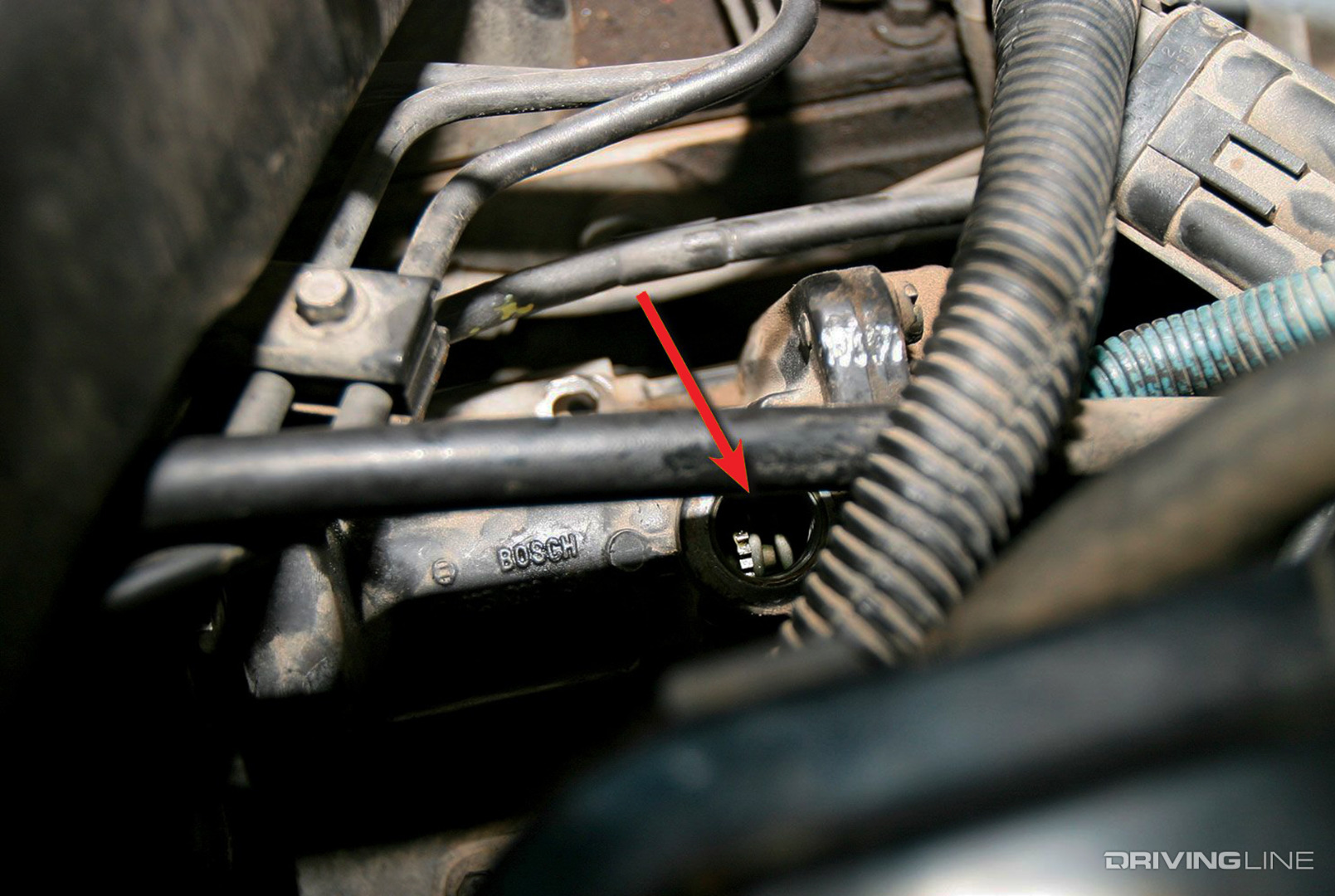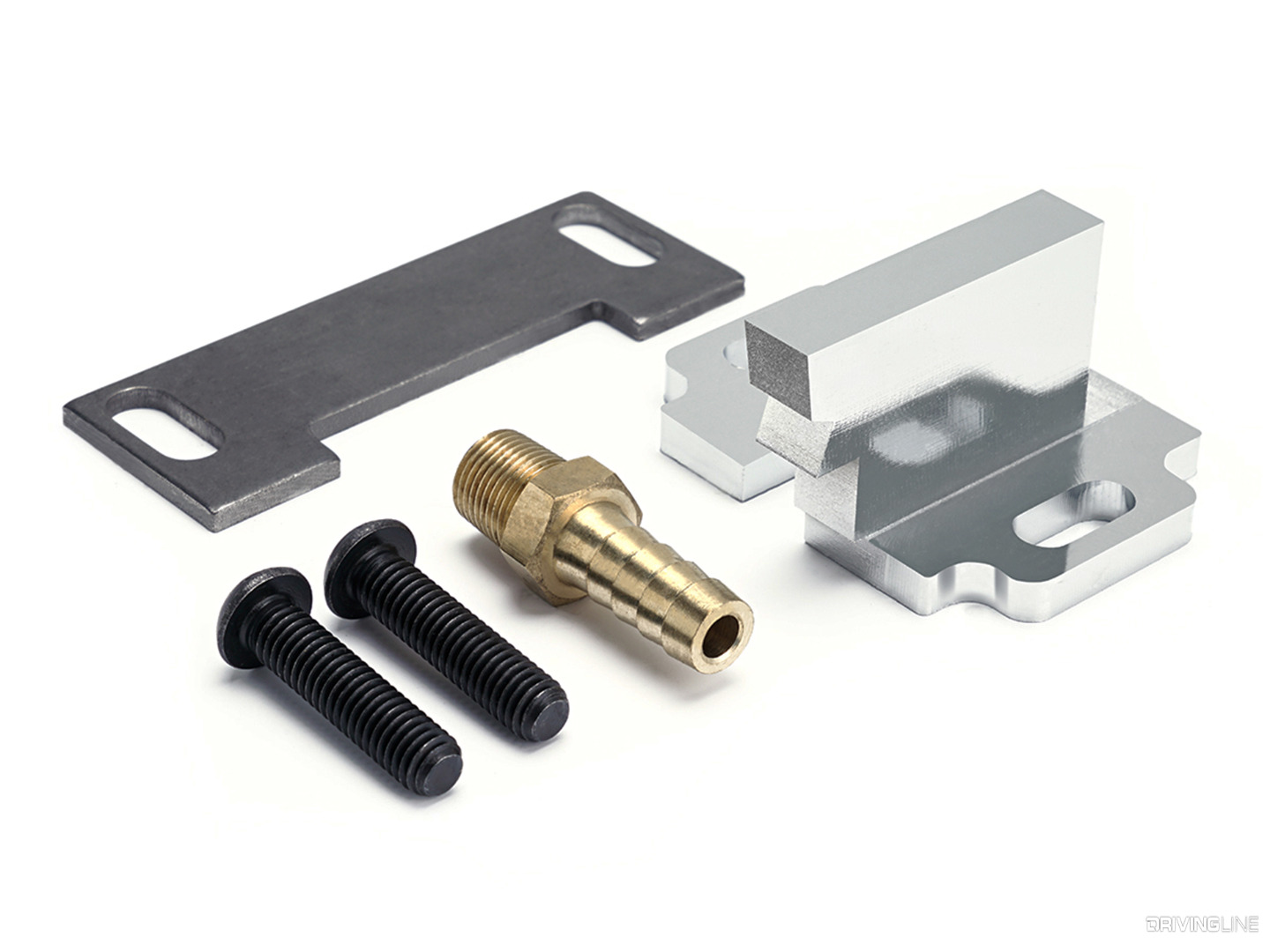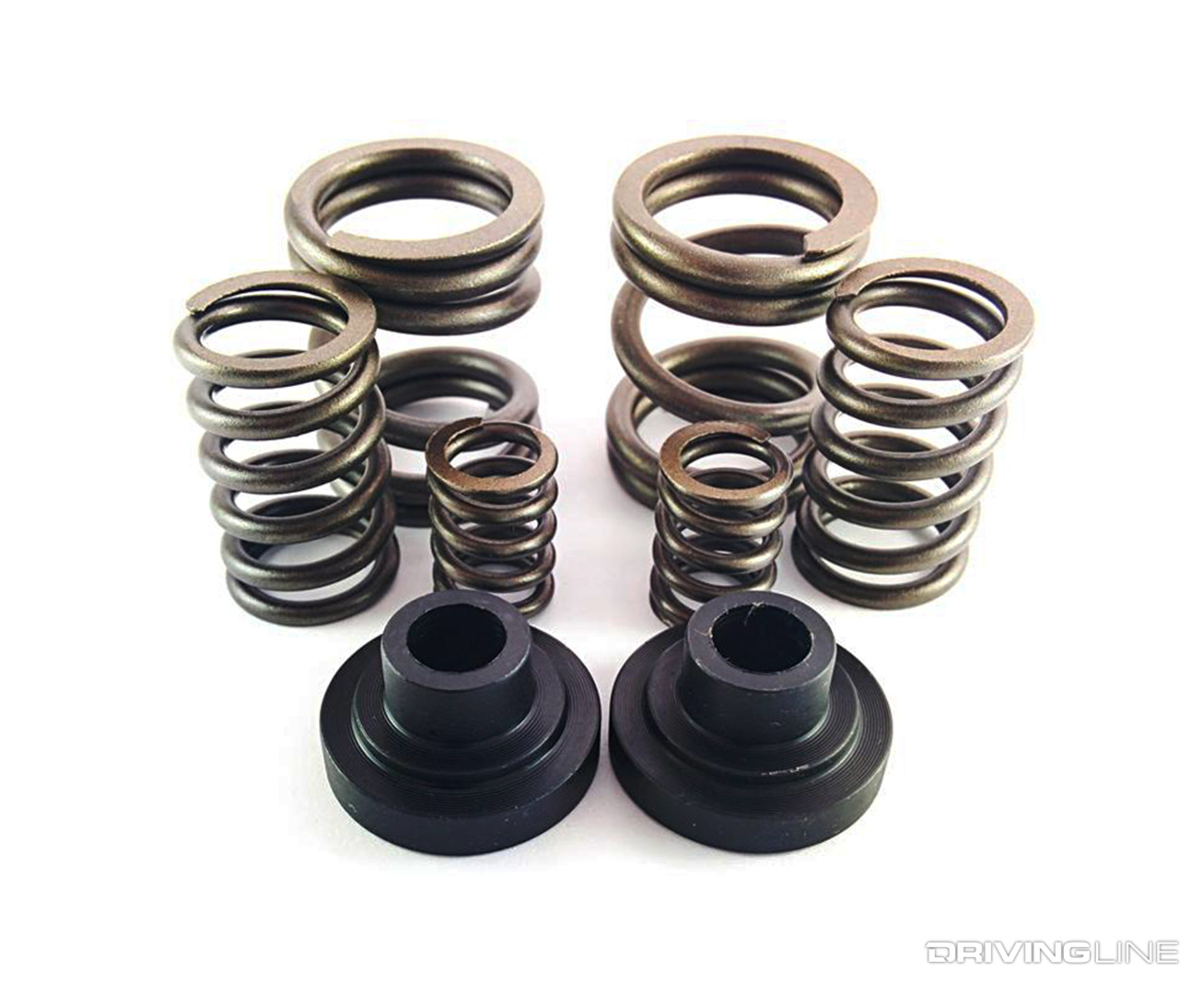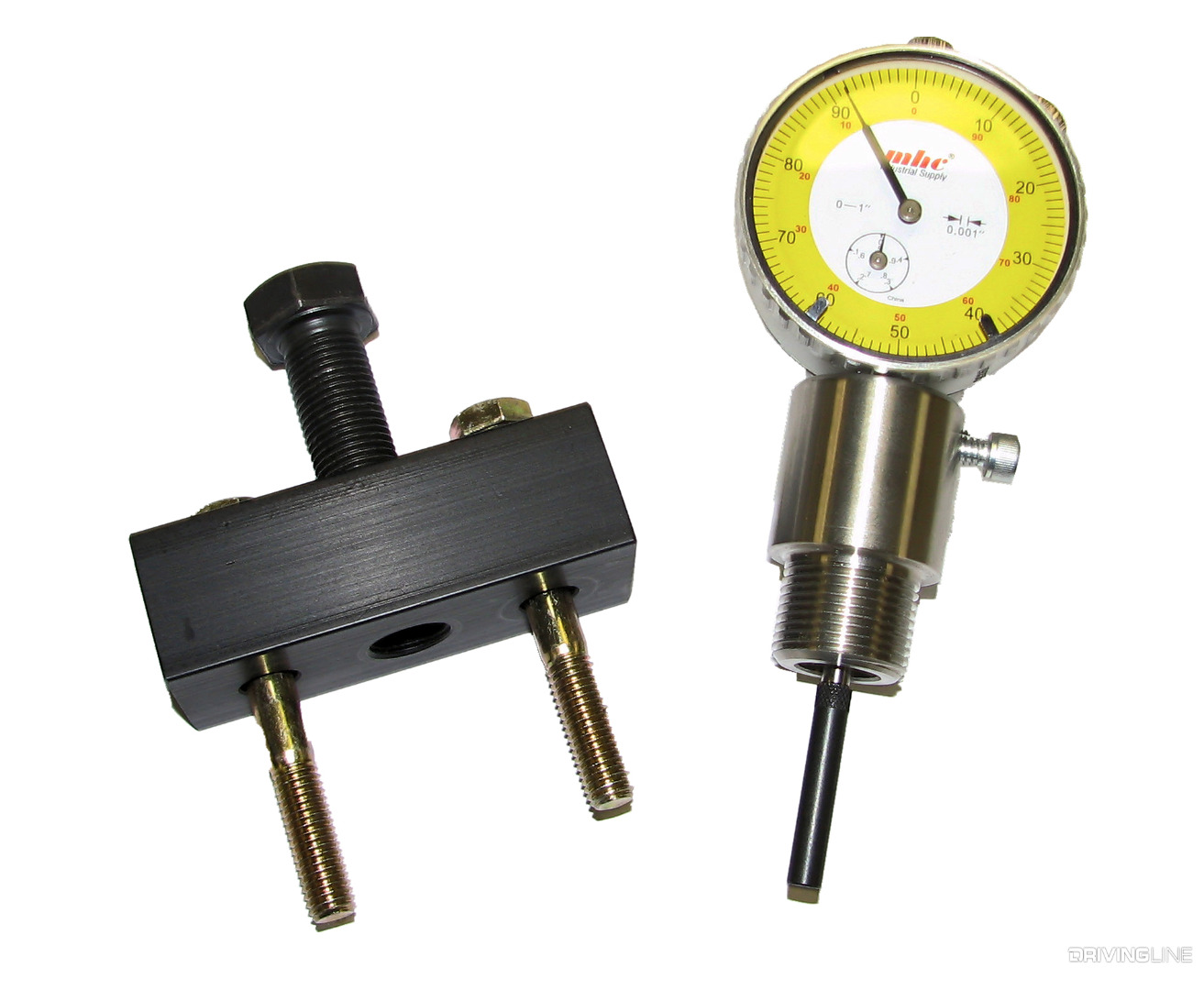Any time we write about the 12-valve 5.9L Cummins, we can always count on plenty of feedback from readers. The very mention of this legendary mill seems to reinvigorate the never-ending mechanical vs. common-rail debate, reminding us where diesel performance stemmed from or (it never fails) kick off a brand loyalty brawl. But, this isn’t another holy grail piece where we worship the almighty 12-valve. Instead, we’re highlighting the biggest reason for this engine’s celebrity: the Bosch P7100.
That’s right, the injection pump hanging off the side of the renowned and revered ’94-’98 5.9L Cummins is more important than the engine itself. The Bosch P7100 is arguably the single most recognizable symbol of diesel performance. It represents easy horsepower for those handy with a wrench, huge horsepower for anyone willing to spend some money and — like the Cummins engine it was bolted to — million-mile durability.
In this article we’ll explore all the components within the P7100 that can be modified to improve its performance. We’ll begin with the mods that won’t cost you a dime, but that can add more than 100 hp. Then we’ll explore the internal upgrades that can take this pump from mild to wild.
Your free P-pump tutorial starts here.
Bosch P7100

Back in the mid ‘90s, long before common-rail injection had debuted and horsepower wasn’t quite as easy to come by, this was the four-barrel carburetor of the diesel world. If you wanted your truck to make 500 horsepower (a big number back then), it wasn’t going to happen with what the competition was offering (the HEUI-fired 7.3L Power Stroke or GM’s indirect injection 6.5L, respectively).
Contrary to what some would have you believe, the P7100’s robustness, performance and reliability don't make it simple. This marvel of mechanical engineering is fairly complex. Think of the P-pump as a mini inline-six cylinder engine bolted to the side of your inline-six cylinder engine. There are many moving parts inside.
Air Fuel Control

At the back of the P7100, you’ll find the air fuel control (AFC) assembly. In addition to dictating when the governor arm hits the AFC arm, the AFC is in charge of controlling the pump’s fuel rate at low boost. By sliding the AFC housing forward (toward the front of the pump) and backing out the pre-boost screw (on the backside of the AFC housing), fueling can be brought in at a much lower rpm, the governor linkage is altered and the rack is adjusted forward. And when combined with a star wheel adjustment (located within the AFC housing), as much as 200 lb-ft of torque can be added, along with a peak horsepower increase of 50 to 60 horsepower.
Turning the Star Wheel

As for the aforementioned star wheel adjustment, turning it toward the passenger side of the truck opens the fuel rack more. The fuel rack controls the amount of fuel that’s allowed to enter the pump’s plungers and barrels. The star wheel is accessed via the top of the AFC housing, and adjustments should be made in very small increments. If you go too far, heavy smoke will result. Go too little, and you won’t see the power gains you’re after. It’s up to you to find the right balance here.
Increased Rack Travel

While adjusting the star wheel increases rack travel, the factory rack plug will only allow so much fuel into the plungers and barrels. The popular “Mack rack plug” shown above increases rack travel from 19 mm (stock) to 21 mm. While 2 mm might not sound like much, the Mack rack plug adds roughly 70 cc’s worth of fuel to the mix and can be good for anywhere between 10 to 35 additional horsepower depending on your pump’s overall combination (specific P7100 model, delivery valves, fuel plate setup and injectors).
While not a “free” mod, this one will only set you back $10 to $15. It’s important to note that the best way to install the Mack rack plug is with the pump off the engine. If the pump stays in place, some grinding of the timing cover will be in order. In addition, the Mack rack plug isn’t typically recommended for 215 hp pumps (the P7100 used on ’96-’98 trucks with five-speed manual transmissions).
Removing the Fuel Plate

The fuel plate controls the maximum fuel output of the P7100, and the stock unit is conservative to say the least. While there is no shortage of aftermarket fuel plate options (along with plenty of custom-made, one-off versions), removing the fuel plate completely will yield more rack travel and considerable power gains (typically 35 to 40 hp).
On a ’94-’98 Dodge sporting the factory injectors, a full-forward AFC housing, turned star wheel, no fuel plate and an untouched stock turbocharger, 85 to 100 hp can be gained. Disable the wastegate on the turbo (increasing boost production by 10-to-15 psi) and you could find another 10 to 20 hp. As far as performance investments go, picking up 100 to 120 hp for free is a no-brainer!
Delivery Valve Holders

Going beyond the freebie mods, the next logical step is to take a look at the pump’s delivery valves. The delivery valves are positioned inside delivery valve holders, both of which are positioned between the plunger and barrel assemblies and the injection lines that feed fuel to the injectors. Aftermarket delivery valve holders with a larger internal orifice (shown above) allow more fuel to travel through them.
Delivery Valves (DVs)

Delivery valves isolate the plunger and barrels from the injection lines (making sure reverse flow doesn’t occur) and also allow for a pressure drop in order to facilitate the precise closure of the injector nozzle during the injection event. Aftermarket delivery valves offer higher flow (up to 100 cc’s), with some being application specific (i.e., some are good for towing, some good for daily driving, while others are reserved solely for performance). Common delivery valves used in the P7100 are 181’s, 191’s, 024’s, 022’s and full cut units, with the full cuts typically being reserved for dedicated sled pull, drag race or dyno applications.
Governor Spring Kits

Because the factory P7100 on ’94-’98 Dodge trucks governs the engine to a grandpa-like 2,700 rpm (with the factory governor actually starting to defuel around 2,400 rpm), an aftermarket governor spring kit should be one of the first items you add. Popular kits from Dynomite Diesel Performance, PacBrake, BD Diesel and Industrial Injection provide full fueling up to 4,000 rpm, with even higher governor springs being available for competition-ready pumps that have been properly set up on a test stand.
The ability to fuel at high rpm is what opens the door to all kinds of horsepower potential with the 12-valve engine. It’s important to note, however, that stiffer valve springs need to be installed in the head if you plan to spin the engine beyond 3,500 rpm or run big boost. For all-out competition pumps, companies like Scheid Diesel and Columbus Diesel Supply offer governor springs that provide full fueling up to 7,000 rpm!
Larger Plungers and Barrels

Just as an engine can have its cylinders bored to add displacement, the P7100 can be bored to accept larger plungers and barrels — and that’s exactly what happens in the extreme segment of the diesel aftermarket. Increasing the diameter of the plungers and barrels from stock (12 mm) to 13 mm adds immense fueling potential.
For example, a 12 mm pump is capable of flowing a maximum of 550 cc’s of fuel (possibly 600 cc’s on a good day or a friendly test bench), while a properly setup 13 mm unit can flow 850 cc’s or more. Shops like Scheid Diesel, Columbus Diesel Supply, Northeast Diesel Service and Hart’s Diesel are highly reputable in the 13 mm (or larger) P-pump world.
Radical Camshafts

Also similar to a miniature engine, the P7100 utilizes a camshaft. The cam features one profile for each individual plunger and as the cam rotates the plungers are driven up and down within their respective barrels. In extreme horsepower applications, the cam inside the P7100 is swapped out in favor of a unit with a more radical profile. With a more aggressive cam, more fuel is injected — and it’s done at a quicker rate. The camshaft pictured above comes from Hamilton Cams; when it’s used in a 13 mm P7100, it can inject 11 percent more fuel volume than a stock cam. It’s also good for as much as 80 additional horsepower.
Timing Is Everything

To be sure, injection pump timing has a lot to do with overall power output. A P7100 set at the factory timing mark will only mildly benefit from the modifications explained above. However, a pump that’s set at 18 to 20 degrees of timing advancement will see impressive gains. The 18 to 20-degree mark is the unofficial sweet spot for timing on a P-pumped Cummins in that it allows for good all-around power, drivability and cold-start performance. While considerably more power might be made with 25 or 26 degrees of timing, drivability will trend downward — not to mention that getting the engine to fire up in cold weather can become a chore.
PUBLIC SERVICE ANNOUNCEMENT:
Don’t forget that the automatic transmissions offered by Dodge during the ’94-‘98 era were easily overmatched by the Cummins in front of them. And while the five-speed NV4500 is very strong, the clutch in front of it will waste no time slipping once it’s tasked with harnessing even more low-end torque. If you plan to tinker with your P-pumped Cummins, know that you will likely be performing some type of upgrade to the transmission in order to enjoy the added horsepower and torque.